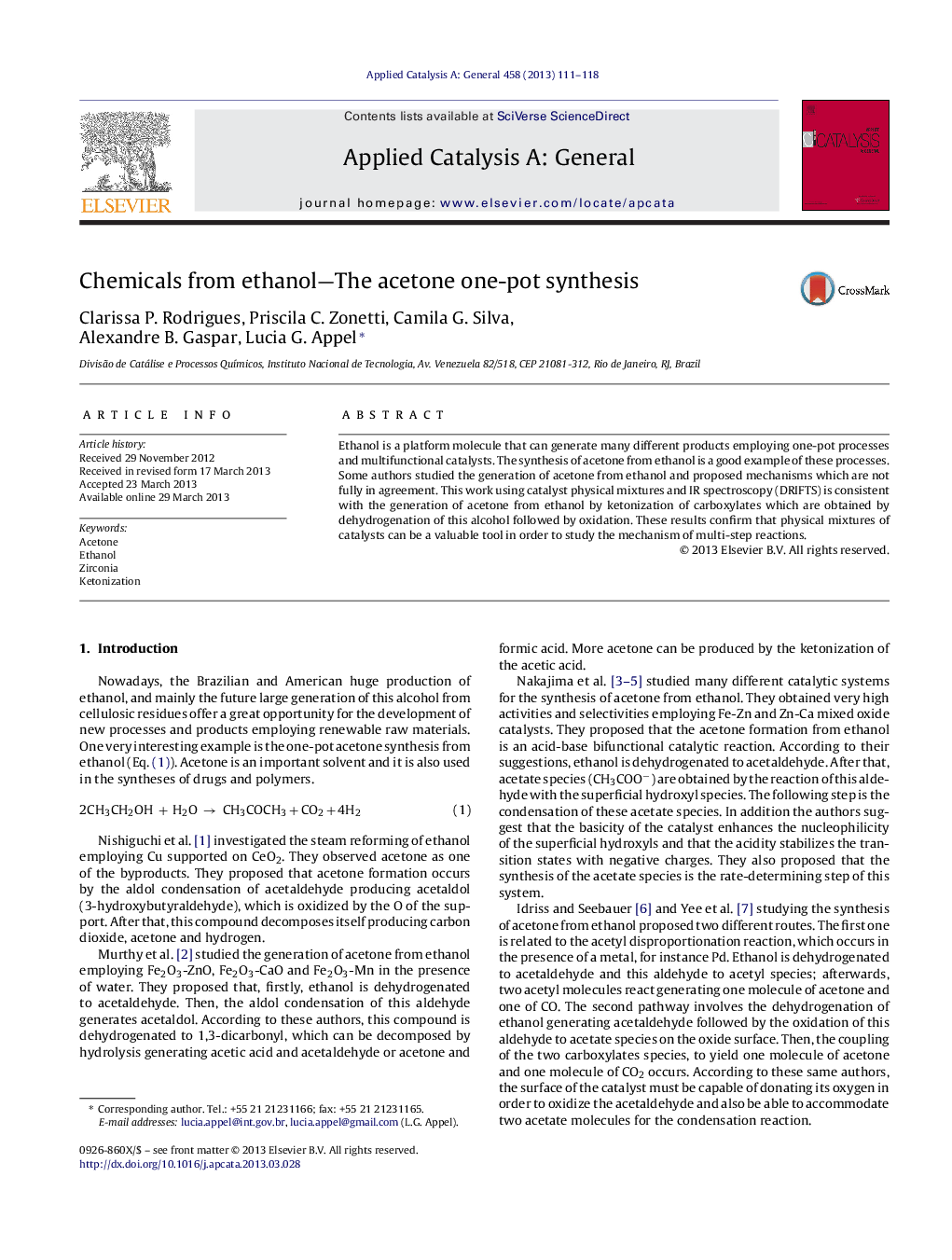| Article ID | Journal | Published Year | Pages | File Type |
|---|---|---|---|---|
| 40447 | Applied Catalysis A: General | 2013 | 8 Pages |
•Acetone can be obtained by the one-pot synthesis from ethanol.•The synthesis of acetone from ethanol occurs by the ketonization of acetate species.•Acetate species are obtained by dehydrogenation of ethanol followed by oxidation.
Ethanol is a platform molecule that can generate many different products employing one-pot processes and multifunctional catalysts. The synthesis of acetone from ethanol is a good example of these processes. Some authors studied the generation of acetone from ethanol and proposed mechanisms which are not fully in agreement. This work using catalyst physical mixtures and IR spectroscopy (DRIFTS) is consistent with the generation of acetone from ethanol by ketonization of carboxylates which are obtained by dehydrogenation of this alcohol followed by oxidation. These results confirm that physical mixtures of catalysts can be a valuable tool in order to study the mechanism of multi-step reactions.
Graphical abstractFigure optionsDownload full-size imageDownload high-quality image (125 K)Download as PowerPoint slide
